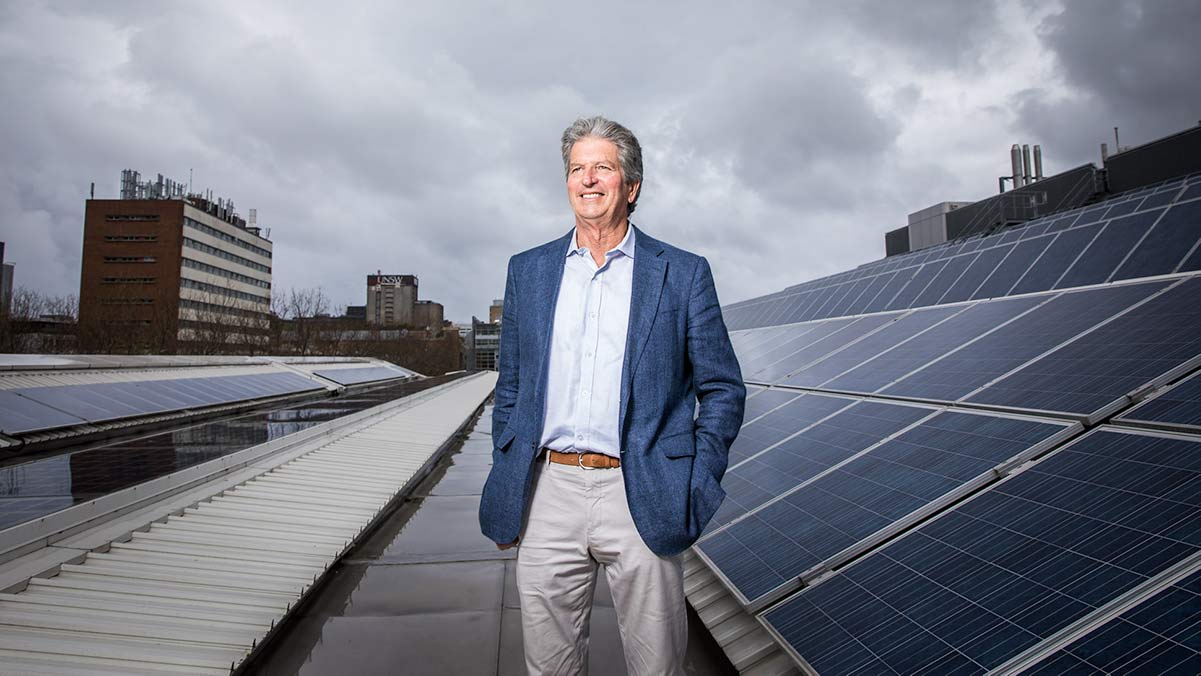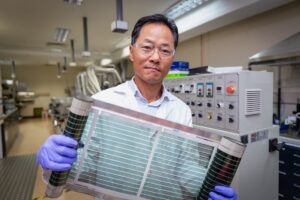Professor Martin Green from the University of New South Wales, Sydney, has become the first Australian to win Europe’s prestigious Millennium Technology Prize for his work transforming the production of solar energy.
Green is the director of the Australian Centre for Advanced Photovoltaics and has made numerous contributions to photovoltaics and is often referred to as the “father of modern photovoltaics”. He was recently recognised by Australia’s federal minister for climate change and energy, Chris Bowen, as a “national treasure”.
Amongst his many achievements, Green has held the record for silicon solar cell efficiency for 30 of the last 39 years, an accomplishment which has been hailed as one of the “Top Ten” Milestones in the history of solar photovoltaics.
The Millennium Technology Prize was awarded for his leadership in the development of the Passivated Emitter and Rear Cell (PERC) – the world’s most commercially viable and efficient silicon solar cell technology.
Presented by Technology Academy Finland, the €1 million global award for technology is conferred every two years and serves to highlight the impact of science and innovation on society.
“The Millennium Prize not only recognises my contribution to photovoltaics, but also the achievements of my students and research colleagues at UNSW, as well as those of the broader photovoltaic (PV) research and commercial community,” said Green.
“I believe the Prize will increase my credibility as a spokesperson for what needs to be done to address climate change. We need to switch from fossil fuels to renewable energy to sustain the trajectory of human civilisation on our shared planet.
“The pace of change is accelerating and the world will shift to solar and wind energy over the coming decade. I believe a huge transformation of historic significance is underway.”
Since its original development in the early 1980s, the conversion efficiency of PERC cell technology has soared by over 50% in relative terms, from 16.5% in the early 80s to 25% in the early 2000s.
The development of PERC technology helped to improve the quality of both the top and the rear surface of standard silicon solar cells. Specifically, when sunlight enters a cell it excites the electrons within the silicon, moving through the cell and creating an electric current.
The improved surface of the PERC cell allows the electrons to maintain this excited state and move freely for longer, resulting in greater and more efficient energy generation.
“Solar cells are increasingly being used to replace large power stations that use fossil fuels,” said Green.
“In 2021, 20 countries or regions including Australia, Chile, Germany, Greece, Italy, Netherlands, Spain, Vietnam and California generated between 8% to 25% of their total electricity supply from solar energy, with this number growing quickly,” Prof. Green said.
“The rapid cost reductions in solar energy that my work has facilitated have come just in time, right at the point when the importance of acting immediately to address climate change has become overwhelmingly obvious.”
“PERCs can help us provide low-cost energy solutions and mitigate climate change,” added Professor Päivi Törmä, chair of the International Selection Committee of the Millennium Technology Prize.
“Continued research on solar cells is needed to replace their constituents that have limited supply, such as silver, with more abundant alternatives.”










